This article is sponsored by Charnwood’s Child -all views my own
One of the topics that I get asked questions about the most is toys. I had strong ideologies about the toys I would provide for my children long before I was a mother. Many of those views have now evolved as I make decisions alongside my husband, have gotten older and of course, the market has changed tremendously- but it still remains a topic that we regularly revisit and give a lot of thought.
Toys are such wonderful tools for both escapism and education for our children. Don’t ever underestimate the power of the toys that we surround them with. I’ll say this point nice and early so it doesn’t get lost within the article -as parents and carers, I think it’s imperative that we’re actively thinking about the selection of toys that we’d like to cultivate in our homes. I’ll expand on that shortly.
Function and beauty can and should overlap -and it’s very possible to only purchase/receive items that bring both you and your family joy. Culturally, that statement always gets lost in translation -but British culture often means that our own inherent politeness doesn’t allow us to enforce the boundaries necessary to communicate what we’d like to surround ourselves with. It’s very possible to communicate on behalf of very young children (or collaboratively with older children) the things that you as a parent/carer think will add value to their play and the things that simply won’t.
We have a 1 in 1 out rule with all of our toys which means our collection never gets out of hand -and it’s only possible to maintain that by being really clear about the types of toys that we feel will benefit our young children. Another important consideration when gifting or thinking about the gifts that our children will receive from us and family is space constraints. Do the children have adequate space to not only receive this gift but store it in a way that allows for easy child access but minimal disruption to the family home. For example, I am an aunty to 3 neices who live in an average sized home with a fantastic toy selection. Their parents have created space for them to enjoy their toys-but they are at capacity. Additional toys from loved ones at Christmas would result in both the children and their space being overwhelmed and so each Christmas and birthday, I check in with their mother and my go-to present for the last few Christmases has been a set of pyjamas, a melamine mug and a hot chocolate sachet. I trust their mother to know better than I do about the type of gift that will provide both that instant joy, practicality and longevity and I’m only too happy to comply. I really appreciate that the same is reciprocated for our children even though it means a very different type of gift is requested (usually books). It’s very easy for our children to be over-stimulated in settings with either too many toys, inappropriately aged toys (for example me as a first time mum buying into gifts that my child is unable to use for a few years) or where the space has inadequate storage and toys aren’t able to be displayed well.
Over the years, one of the things we’ve never shied away from is investing in our toys. As with the clothing we purchase, we always factor in cost per use and with an ever expanding family, it’s important for us to have toys that not only work over an expanded age group, but are built to last so that they remain in top condition when being passed down to the next sibling. Seeking out high quality toys, inevitably means that the quantity of toys that we own is reduced and that’s something that’s always worked well for us living in smaller spaces -although we have no intentions of changing now that we have more space. So how do factor in the larger ticket items?
- 1 in 1 out rule gives you the option to sell on high-quality toys -there are many Montessori-specific BST (Buy, Sell, Trade) pages
- As we know the brands we’ve come to love and trust, we also utilise those BST spaces as the first port of call for specific toys
- For larger items (for example a Pikler frame), we will ask for all of the family members planning to purchase individual gifts for our four children to consider contributing an often smaller amount towards a singular present.
- When building a collection (for example Schleich toys or crochet play food) we will ask for a few pieces each Christmas over a period of years.
In this article, I’m going to put forward my suggestions for the core staple items that have worked for us over the years and stood the test of time.
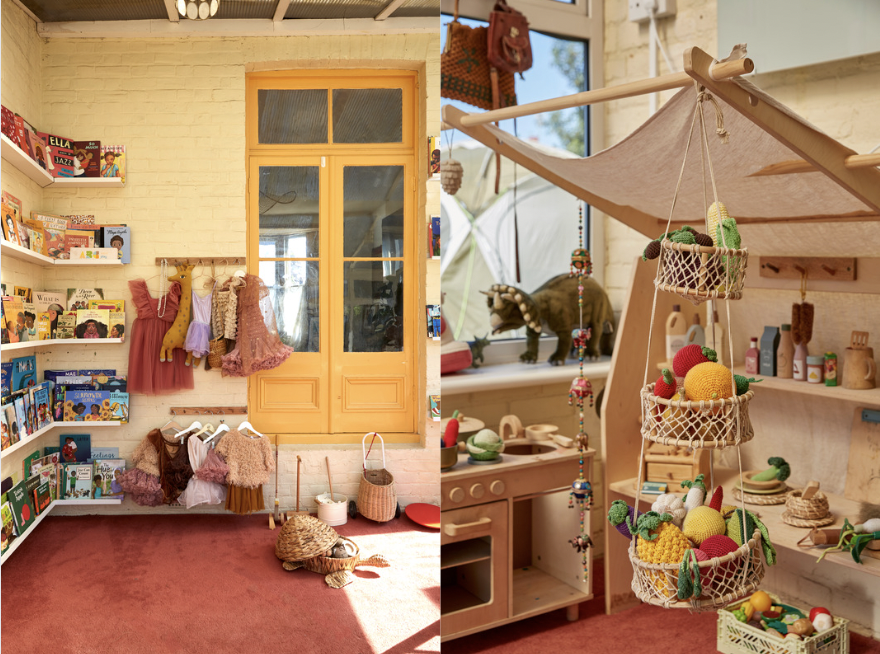
Open-ended play
When putting this article together, it became abundantly clear that there was a theme connecting most of the suggested toys -they almost all promoted open-ended play.
Don’t worry if that phrase is new to you -quite simply- open-ended play is unprohibited play, without boundaries, or a specific end goal or purpose in mind. The loveliest part? It’s “play” with endless possibilities. Whilst wooden blocks can be played with to create an imaginative telephone… a toy telephone can only ever be a telephone. In practice, I want to help you curate (slowly over the years) as few toys as possible with the maximum play capabilities.
Open-ended play is so wonderful because it allows a child to fulfil the natural desire to experiment. We can learn so much from observing open-ended play because we haven’t had any input on where the play will end up. Observing from afar can reveal to us interests before our children can even verbalise preferences -it can teach us about their personalities (particularly so observing siblings interact in joint open-ended play) and it allows our children the opportunity to play without adult intervention.
My favorite thing about open-ended play is there are often multiple “correct” ways to achieve what’s in a child’s mind. Watching my eldest three children collectively problem solve is such a learning curve for them too because surprisingly, it’s not always the eldest child to find the method that works best whatever joint play project they’ve begun.
When faced with long stretches away from school such as now in the Summer holidays, open-ended play can involve “projects” that stretch over days at a time. Sub-consciously, we are guiding our children to incrementally improve their attention spans on these longer projects which we know are invaluable skills for both school and workplace settings. It encourages the children to be inquisitive and have confidence in their own ideas as they’re providing their own safety of knowing that they can and should get things wrong.
We don’t follow a particular school of parenting -as none fully encompasses our beliefs. Over the years, however, we’ve taken core principles from various practices, such as gentle parenting, Montessori, and Waldorf -added core cultural values into the mix, and removed any individual principles that don’t speak to our personal ideals.
Baby Sensory Bottles
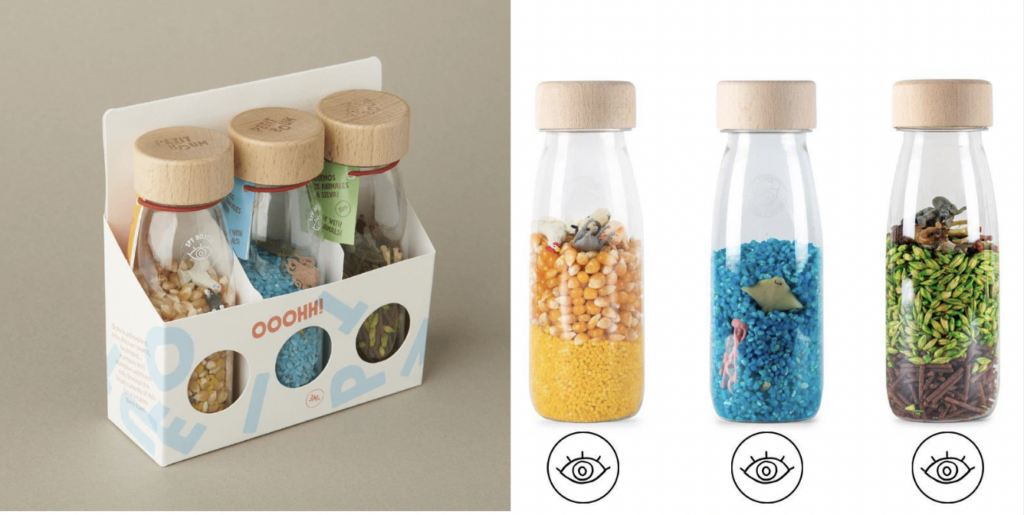
Sensory bottles provide a safe and fun way for babies and young children to explore and engage with various interesting materials and colours. Before the age of 1, we tend to have the bare minimum amount of toys (in our household, we’ve found 5 to be a number that has worked for our children). I hadn’t heard of sensory bottles when my first three were born, but we can’t wait to introduce them to our youngest once they are of age (recommended for age 3 months+).
The set I’ve selected here covers three themes; farm, sea, and jungle and each one works to captivate your little one and stimulate their senses. Each one works to stimulate the senses of your child and you’ll watch them search and track the animals whilst their ears are working hard to understand the sound created by shaking, rattling, and tilting the bottles.
The pack of three means you can rotate them which will keep your baby interested as well allowing you to keep them somewhere handy at all times, like the car or changing bag.
Building blocks
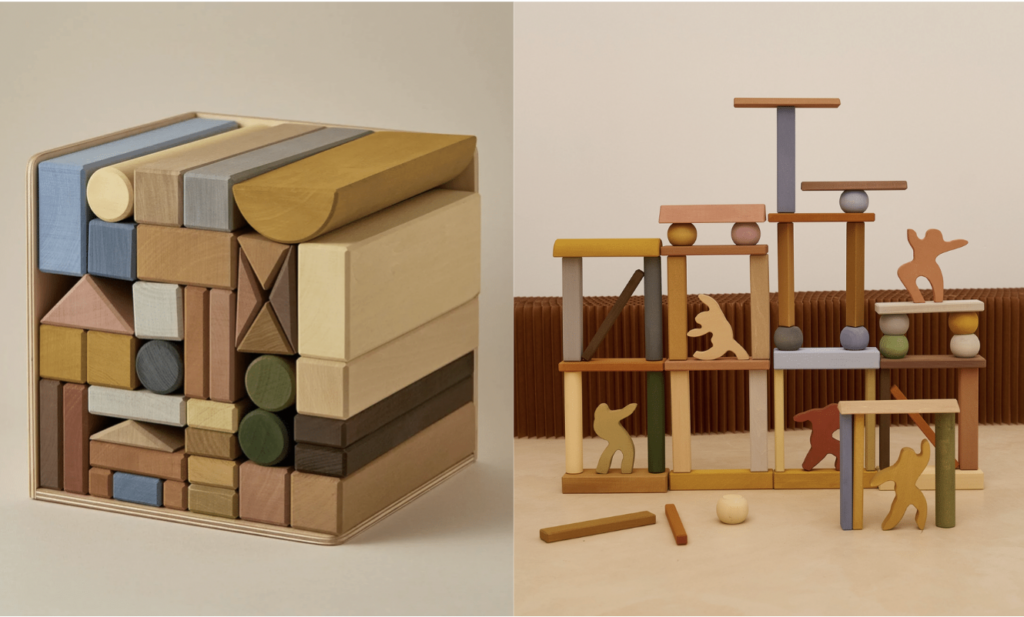
There are seldom toys that I can recommend more than the humble building block. We have added a few different sets to our collection over the years -both vintage and new but we will always be huge fans of our Raduga Grez blocks from Charnwood’s Child.
Playing with blocks can help to improve mathematical skills, and is also a great way to introduce early age-appropriate concepts around geometry gravity, and balance. Coloured blocks ranging in size can be used to increase your child’s vocabulary -as your child explored building different projects, you can introduce describing what you see “blue square, orange rectangle” etc.
Although this particular set of blocks is relatively small, the variety of blocks means there really are endless creative options.
Activity Baby Walker
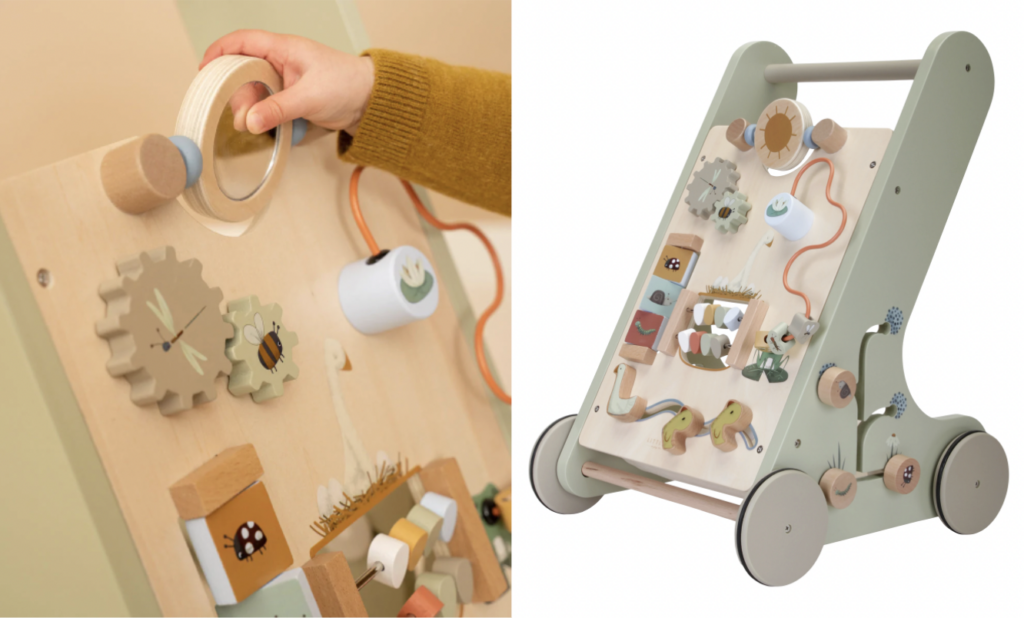
Think of an activity baby walker as a combination between a traditional walker toy and a busy board. It’s the perfect “first” larger gift -and if you’ve been establishing boundaries with wider family members about not having an overwhelming amount of toys, particularly over the baby stages -this type of toy can be a really special item that you could ask grandparents to consider pooling towards.
Baby walkers are great tools for helping babies aged around 12 months+ to learn how to walk. Their ergonomic structure and the additional stability that they provide make them ideal and the activity elements help to enhance a range of key developmental skills that few toys geared towards the same age group could offer in a single toy. Number recognition skills, fine motor, and hand-to-eye coordination skills all have the opportunity to be improved with the activity elements and there is of course that huge boost of self-satisfaction and confidence when your child begins to master the various stages of walking.
This particular wooden multi-activity walker offers many challenging activities to support the development of your child’s motor skills. You can challenge your baby with the many engaging activities of this beautifully decorated walker and have great fun exploring and mastering the 8 activities included on it.
Thanks to the balanced design the baby walker is very suitable for learning how to walk for children of 12 months or older that are almost ready to take their first steps. The rubber wheels will not make any marks on your floor and are safe for use inside and the muted tones mean that despite it being a larger item, it will blend in with most surroundings easily.
Duplo/Lego
We use both Duplo and Lego (age specific) as a core staple in our home. Stored in our IKEA TROFAST display -the deepest tub for Duplo and a slim tub for Lego -they are fantastic toys to help promote fine and gross motor skills and number skills too.
We love that Lego and Duplo can be combined allowing for an even larger variety of options for open-ended play. They each promote creativity and we found them great for introducing varied textures on a single block which was great for one of our children in particular as they struggled with specific textures early on.
As much of our toy collection follows the Montessori guidance of using natural fibres -the colour palette is quite muted as a result. Lego and Duplo however, introduce a welcome burst of colour and I find that introducing it in the latter stages of an invitation-to-play can usually add on an extra thirty minutes of excitement (allowing me the time to enjoy a piping hot drink!)
Practically speaking, as Duplo is usually used by our younger children -I love that the durable material means that it’s one of our few items that we can throw in the dishwasher on an isolated wash for a deep clean. Much like the Schleich toys, it also means that they can withstand water play and all year-round outdoor play too. You might be surprised to know that we also use them as bath toys. If the kids are having a day bath (anyone else’s kids request them to have “calm time”?) -larger Duplo blocks also serve as an excellent bath toy -typically paired with a sieve.
When it comes to family gifting or birthdays -whilst they already have a good-sized collection -the bricks inevitably get lost from time to time and we’re always happy for our family to buy smaller kids to add to their collection. There is a great resale market for lego bricks online. You can choose pre-loved mystery bags for just a few pounds which I love to do.
I’ve often struggled to find diverse figurines, but we have a handful of Black vintage Playmobil characters that we had excess leftover as party favours from my eldest’s 2nd birthday and so the kids often pair them together.
Rattle Eggs

Musical instruments make wonderful gifts for children and this set of three little wooden rattle eggs (suitable from 12 months+) make a wonderful first instrument quite similar to maracas. Each egg provides its own unique sound and they are small enough to fit into the palm of your little ones’ hands.
Why do we love rattle eggs so much? They provide ideal opportunities to stimulate and improve hearing and motor coordination and their rhythmic perceptions too. Rattle eggs are great for teaching “cause and effect”. Even the slightest movement triggers a sound so our babies are receiving instant auditory feedback proving to them that their actions are responsible for the sound reaction. You may have witnessed your baby discovering cause and effect before. Perhaps on a tummy time mat -the first time they notice their twiddling toes can be seen in their mirror and this becomes their favourite action to do and watch. Rattle eggs are also great for babies grasping skills -as mentioned they can fit comfortably in the palm of their hand -unlike traditionally shaped rattles that require additional effort to hold onto. This initial grasp will help to develop stronger grasping patterns over time and your little one can advance onto toys and objects that additionally require thumbs and index fingers.
Once your baby gets to a more mature grasping stage -you can use the eggs for alternative play -loose parts play is just one example.
Bead Threading Kit
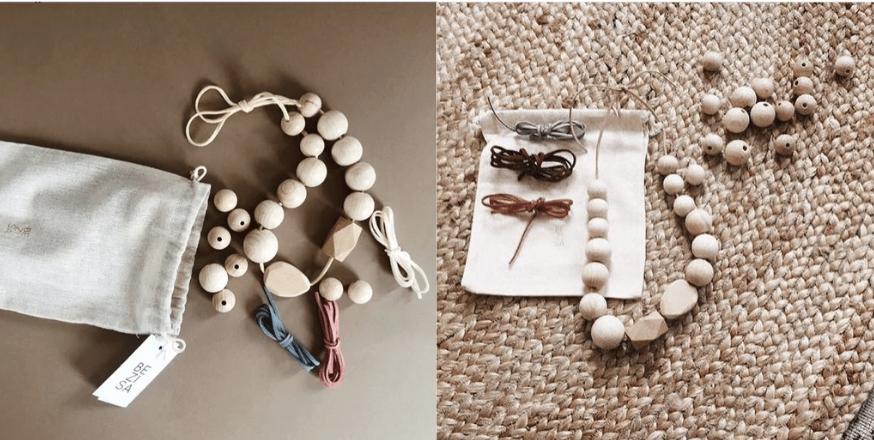
This is a great addition for older kids and isn’t suitable for children under the age of 3. Threading activities are a firm favourite for us when the children are feeling overstimulated and are showing signs of needing some “down time”.
Threading activities are great for increasing motor skills, imaginative play, confidence building, and crucially -concentration. As our older children advance in school years, we want to assist them in the inevitable transition of having to happily sit quietly for long periods of time. This isn’t something that necessarily comes naturally to young children and when we can find activities that they love that assist them with this skill, it’s a real win.
We love this set from Charnwood’s Child. Simple, and durable, the beads come in a range of sizes and keep our children entertained for hours. When not being used for threading, you can incorporate activities sorting them into size and they also make great additions to loose parts play and pattern making.
We love adding to our bead collection whenever we can -you’ll often find little job lots of bead treasures in charity shops or car boot sales -the perfect pocket money treats to add variety to your bead collection.
Anatomically correct dolls
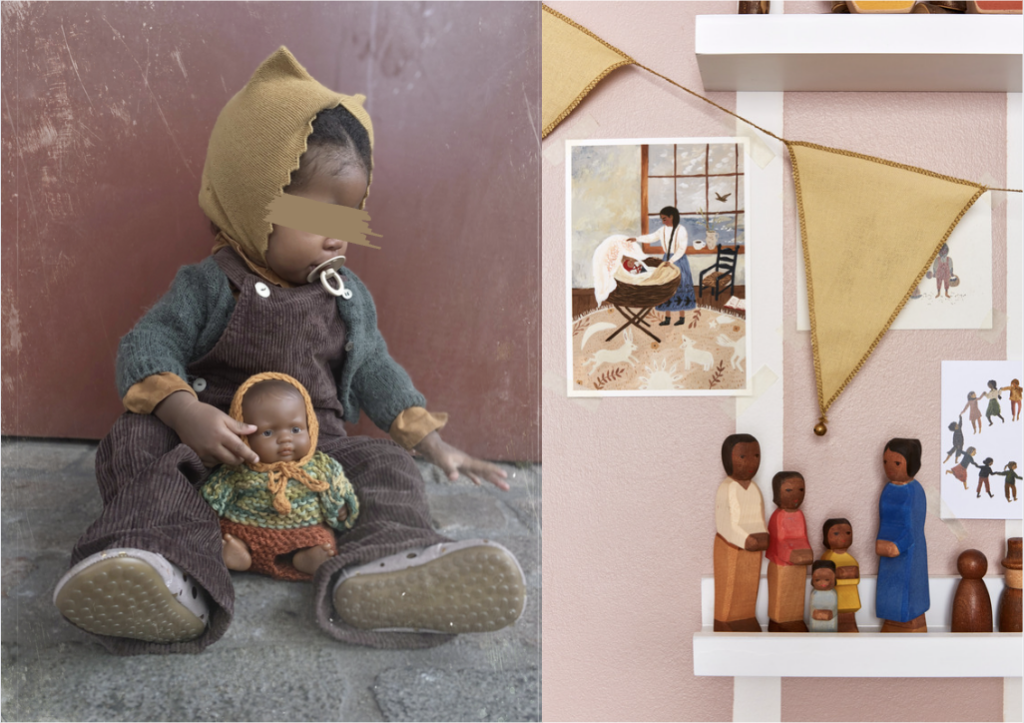
In our household, we use the correct terms for our sexual organs. That’s not something that comes naturally to us and we have had to actively unlearn using so-called “child-friendly” alternatives. Studies, however, show -that children that are confident in using the correct terminology, are better equipped to discuss with their parents/carers topics around appropriate/inappropriate touch, consent, and healthy body image. Open discussions around these often heavy but such valuable topics can be a primary factor in reducing any shame or stigma attached to a child in your care raising a body-related concern with you.
Dolls that censor sexual organs by either smoothing over the area entirely or having permanent underwear in place can allude to the idea that our sexual organs are something to be ashamed of and deny us some really useful teaching moments. Some that you may not have considered are toilet hygiene (wiping from front to back for example), a tool to approach discussions around body consent, a safe and healthy way to answer curious questions about the differences between another gender’s sexual organs, and for increased self-esteem (as opposed to dolls perpetuating unrealistic and unattainable body standards).
We’ve always loved using these dolls. Our eldest children shared a version with female genitalia and before their sibling was born, we introduced a male version of the same doll so that we could establish the correct terms to use ahead of their brother being born and demystify it as such.
Lastly, anatomically correct dolls can be a great way to introduce topics of racial diversity. Our children are Black living in a white-washed society and so representation was crucial -however when deciding what race doll to purchase -the windows and doors analogy that I refer to a lot with regards to children’s literature -certainly applies here.
Wooden vehicles
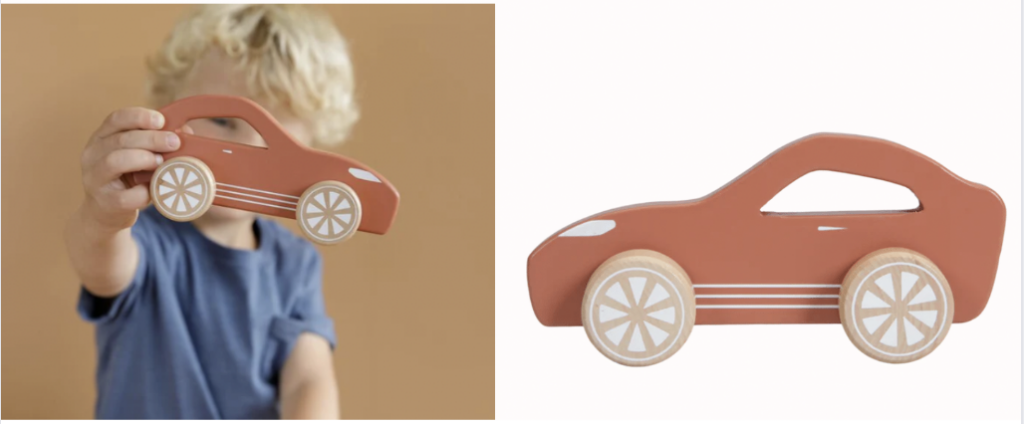
When my eldest was approaching 2, we purchased a job lot of old wooden toy cars from an online marketplace. I may have only spent around £5 or so and for that price, I got a good selection. I had no idea how my child was going to interact with toy cars as they hadn’t had any similar toys in the past and I figured that this method of purchasing allowed me to test that with low risk.
My husband and I observed them playing over several days to see which models they gravitated to (we didn’t want to keep them all) and we soon saw the benefit of adding a wheeled vehicle into their toy rotation. Sub-consciously, playing with different weight wheeled vehicles provides fantastic opportunities to develop cognitive skills. Think about it -your child will be absorbing and exploring early concepts of gravity, speed, and physics all without realising. There’s also the opportunity to add the element of height to see how that impacts the speed -to laden the vehicles, to introduce figurines to mimic real-world settings.
I opted for this lovely little sports car -made of solid wood that can really withstand a rough ride. Pair it alongside figures, trees, and roads to create any number of imaginary scenarios and if space is limited, consider purchasing a roll of “road sticky tape” to create instant tracks wherever you are.
Magnetic tiles
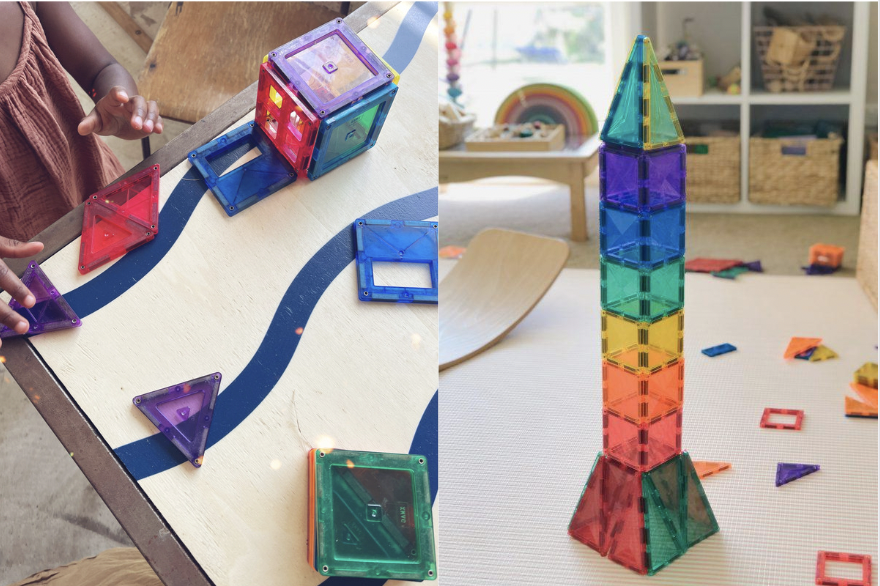
As an open-ended quality toy, Connetix will grow with your child as they learn and their play becomes more complex. We love toy staples that can be added to, to suit the kid’s needs. This set gives us the option to factor in additional sets as joint family gifts over the years to adapt to the kids changing play needs.
These sturdy and bright magnetic tiles allow STEAM learning through play. Our children are encouraged to maximise their imagination to create an endless stream of creations such as houses, small castles, rocket ships, towers, puzzles, and sorting boxes.
It’s unique in our house as it’s the only toy providing the opportunity to learn about the concepts of magnetism- opening the door for age-appropriate Science conversations.
Natural dough rollers
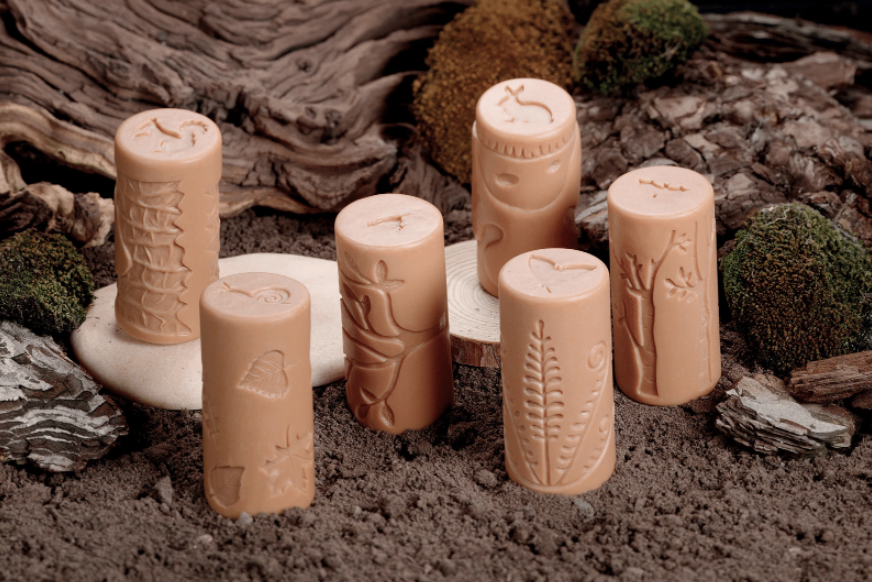
Dough features in so many of our activities, that I’m always on the lookout for ways to add elements of interest to it. These natural dough rollers suitable for ages 2+ are stunning tactile additions to our dough drawer and can really help to transform simple play.
To use them simply press and roll them into play dough or clay and stamp with the creatures to make wonderful woodland scenes. If like us, you love invitations to play, we love using the tree woodland rollers on the green dough as an interactive base with our Schleich animals.
Children can also experiment by applying different amounts of pressure and rolling in different directions and overlaying patterns.
This set of six rollers includes the following forest animals and their habitats: bird and tree, bat and wood, moth and fern, squirrel and tree trunk, snail and leaves, rabbit and burrow. They are made from a durable stone mix and are easy to clean.
If you’d like a recommendation for natural play dough, look no further than this set here or if you’d like to try your own hand at making natural dough, why not use our latest activity sheet in collaboration with @cornersofmy.
Because of the life span of natural dough and how often we use it in our play, it’s often top of the list of things that we request from loved ones at special occasions.
Grapat Loose Parts
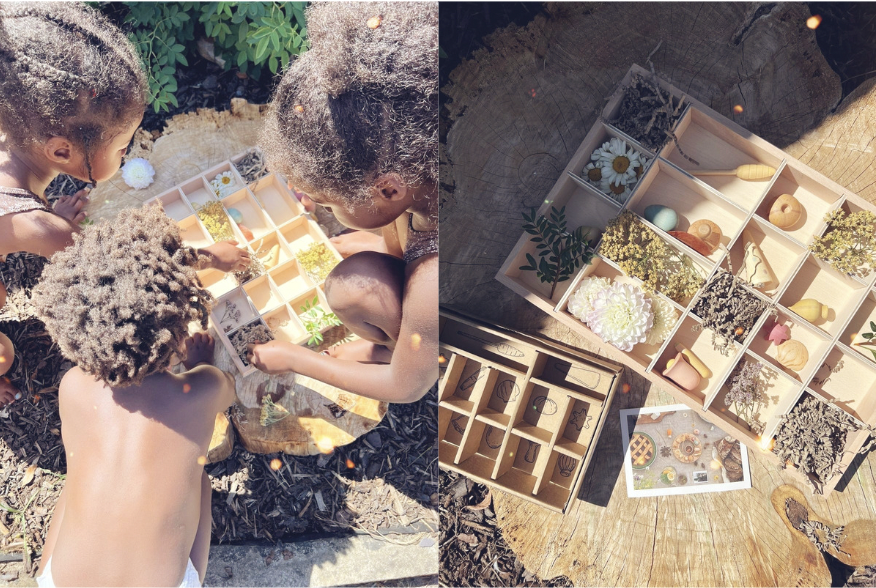
We absolutely adore this Grapat set of loose parts. My eldest has an ever-growing collection of loose parts (referred to as treasures!) that are part-foraged (interesting shells, dried flower pressed flowers, etc.) and part small wooden loose parts from Grapat.
Loose parts are fantastic for helping children develop fine motor skills but my favourite thing about our loose play components is that they give our older children an age-appropriate selection of items of relatively low value, to personally look after, organise and keep safe. Rather controversially -whilst sharing is an integral part of the way that our children play -we also think it’s very important for the kids to have individual ownership of items. We find it’s an excellent way to give age-appropriate responsibility and when we opt for quiet solo play, it reduces the need for squabbles over who will be taking what. Individual toy ownership also allows a great opportunity to improve their negotiation skills when they like to trade items temporarily.
This particular Grapat set features 12 elements from the flora realm, to connect the child with the cyclical changes in nature and to treasure and recognise mother earth’s gifts every month of each season. It’s perfect for children who have an affinity for small-world play and enchanting other worlds. The products are made using water-based non-toxic dyes and finishes that are made with vegetable waxes and oils. Each piece of Grapat is unique, they are painted by hand and the characteristic ‘imperfections’ of the wood make the material even more valuable.
If you’re looking for a great way for your little ones to store their loose parts and treasures –this tinker tray from Grapat is a great solution. Where possible, we love visible toy storage rather than hidden away as it helps to promote child-led play and as parents we can monitor which items they naturally gravitate towards (an important factor for our 1 in 1 out process).
Schleich animals
Montessori only encourages the use of toys made from natural materials whereas Schleich toys (hand-painted plastic toys) are an integral part of our play. Much like the anatomical dolls, Schleich toys are relatively accurate in each depiction of animals and it’s that life-like quality that makes them such a fantastic addition to play-based learning.
One of the benefits of Schleich animals being plastic is that they are extremely durable -this is great from the perspective of buying them second-hand -but also for the life span of use for your child.
Our Schleich animals are used for both indoor and outdoor play -they can withstand water play and Summers continuously left out in the mud kitchen and are my absolute go-to for small world invitations to play on cold and wet days when we’re stuck indoors.
Schleich animals often feature on our wishlists from family at Christmas because the price points when bought individually are accessible for almost everyone (£3 to £7 each depending on the size of the animal). If we specify a handful of animals for one Christmas, a family member that wants to expand on the gift might ask if we also need the cub version of the adult bear we requested for example and it’s really nice for loved ones to see this very well used collection that gets so much play, expand over the years and still remain a firm favourite.
For more in depth, regular advice about toys and establishing boundaries, why not subscribe to my Patreon account. And for a little more thought on the subject, you can have a read of this previous instagram post where I answer your top toy related questions in the comments section.
For a limited time only, Lauren, the wonderful face behind Charnwood’s Child, is offering my readers a 10% off discount when using code TVDP10*
*Terms & Conditions apply